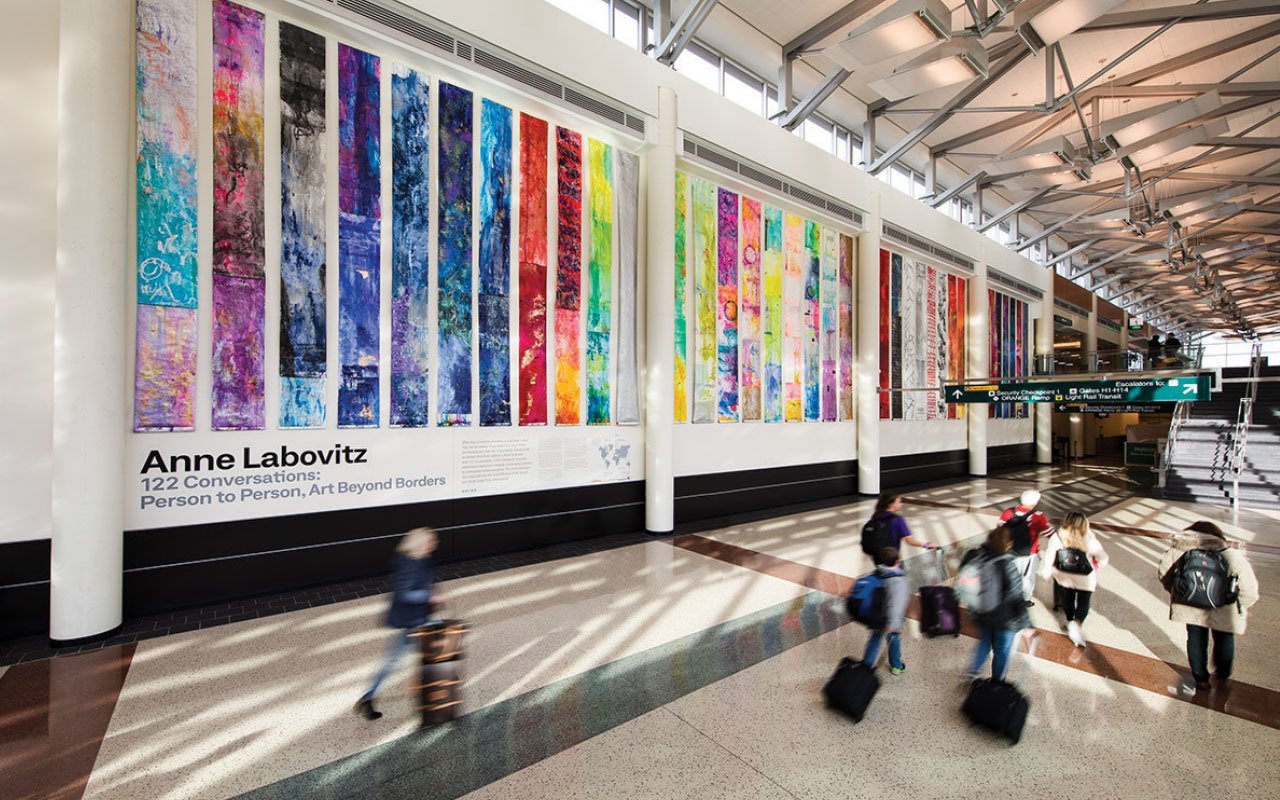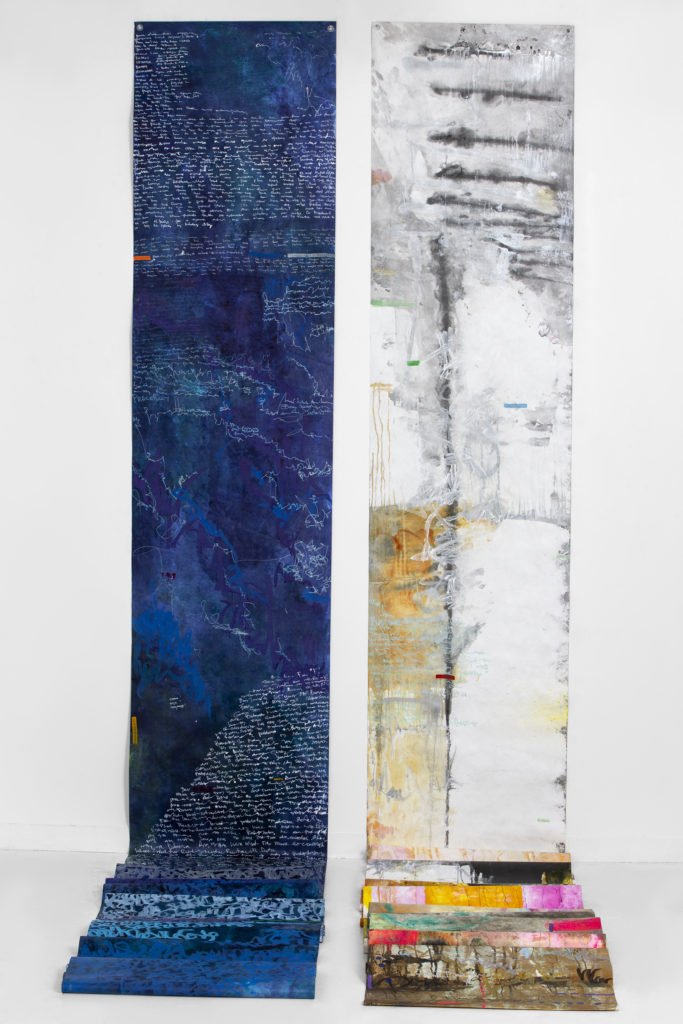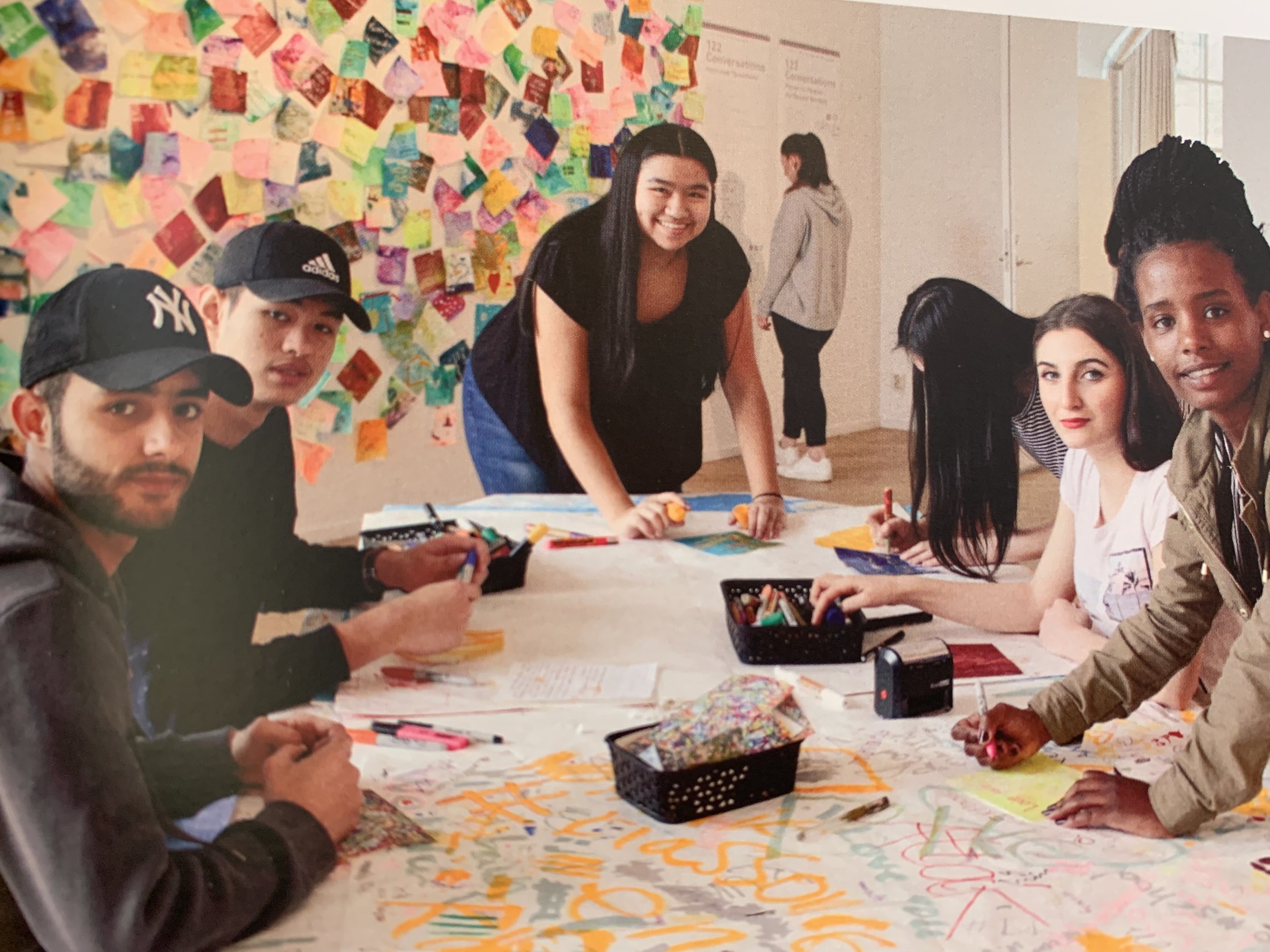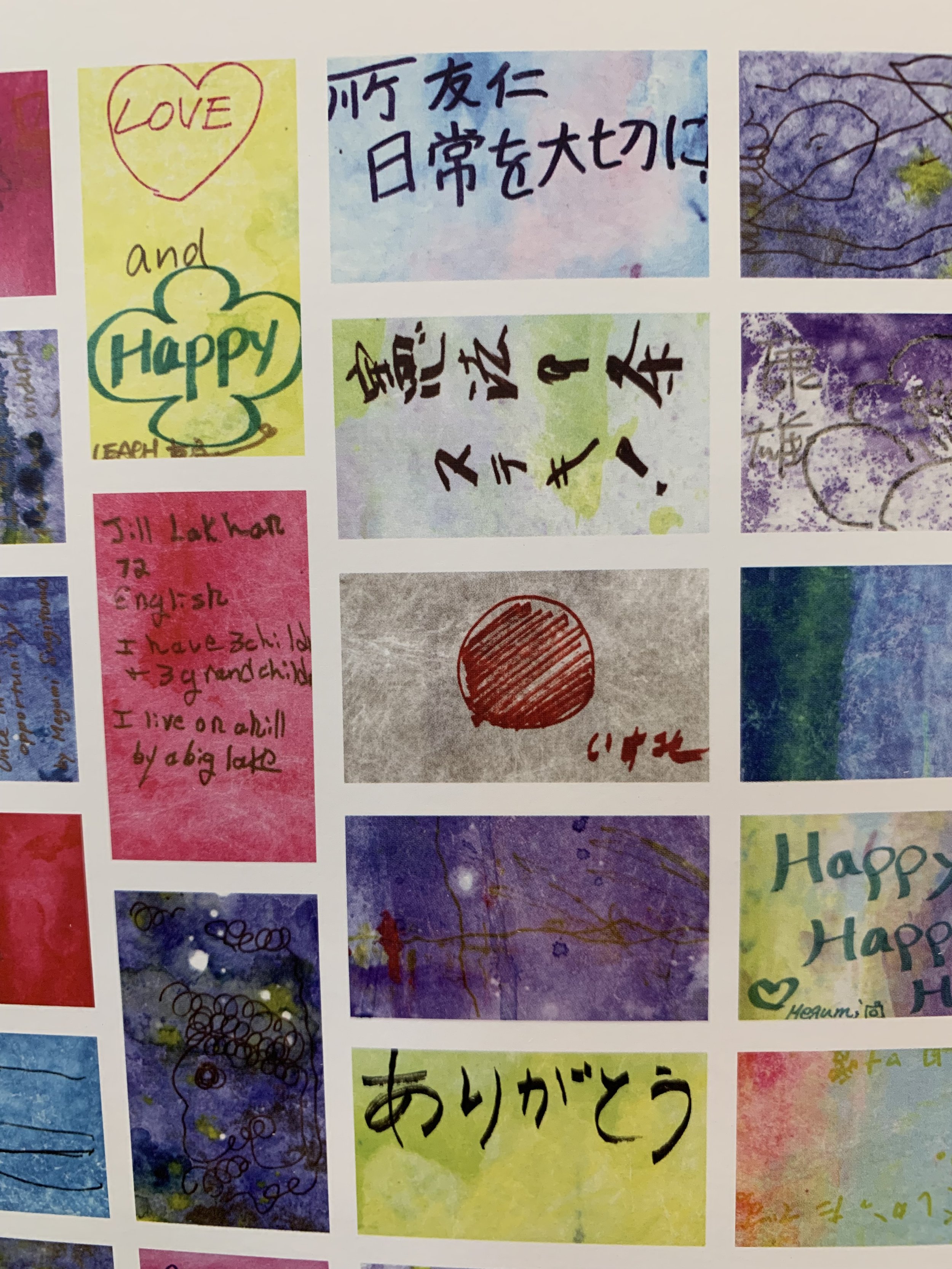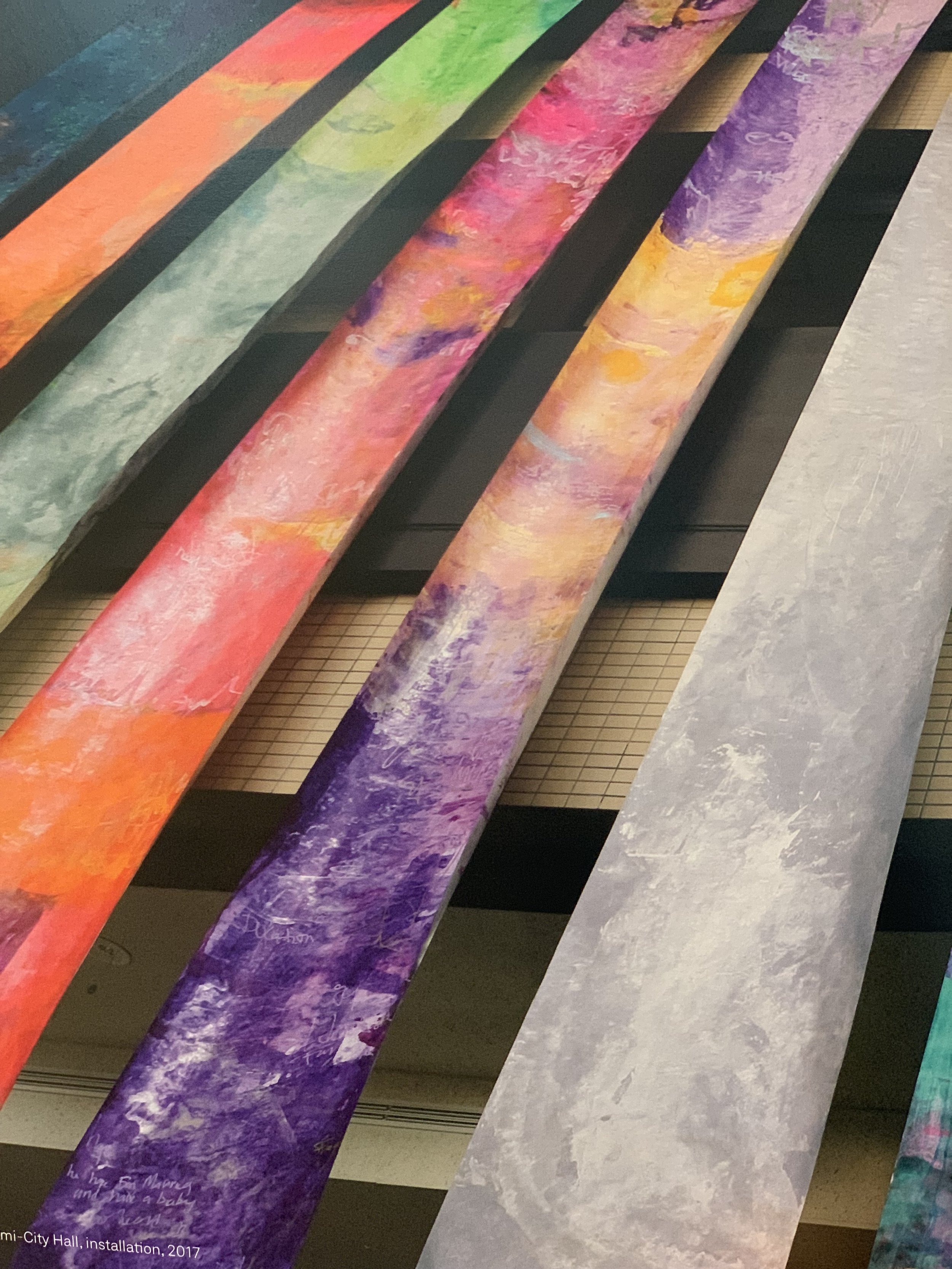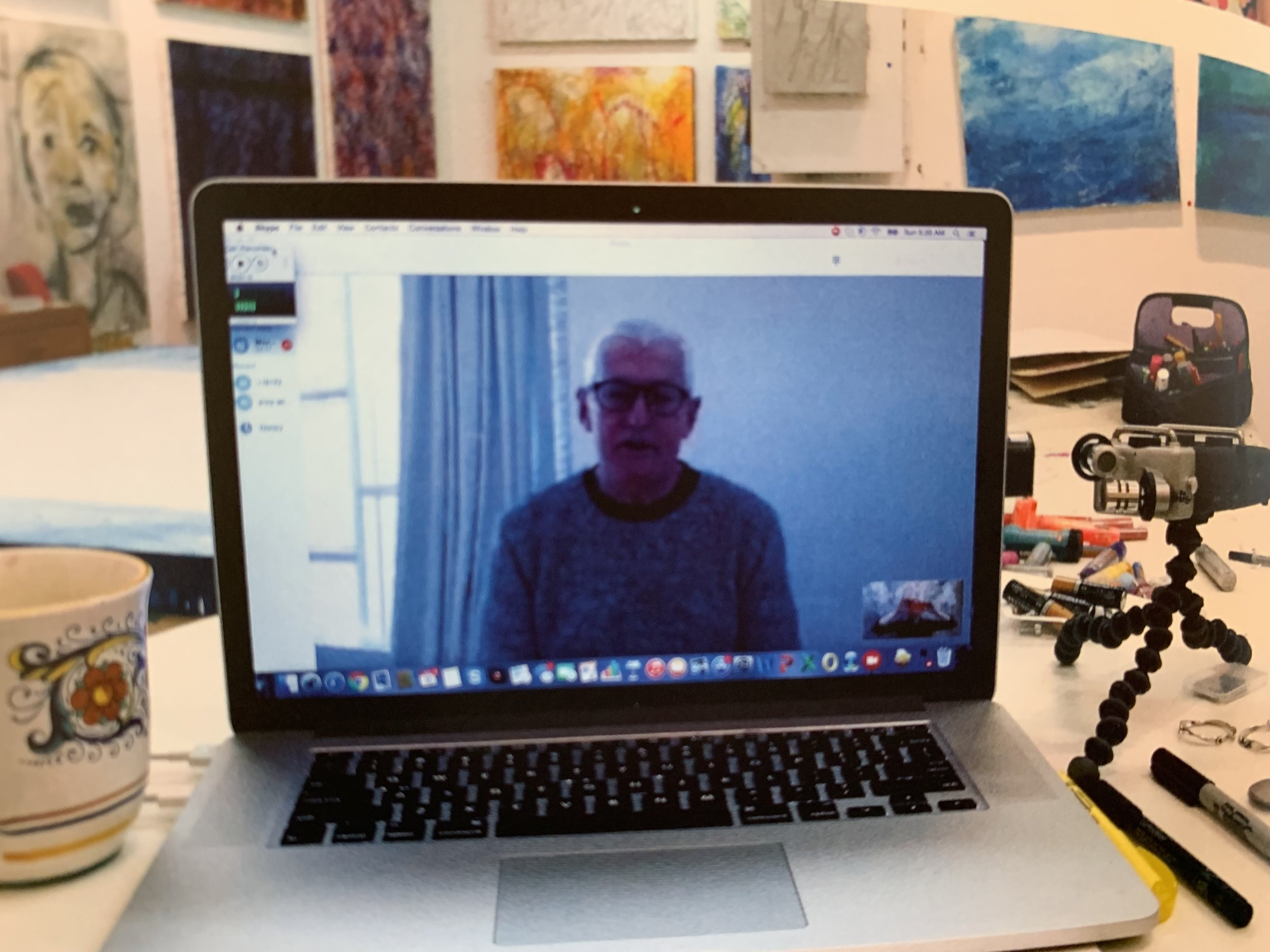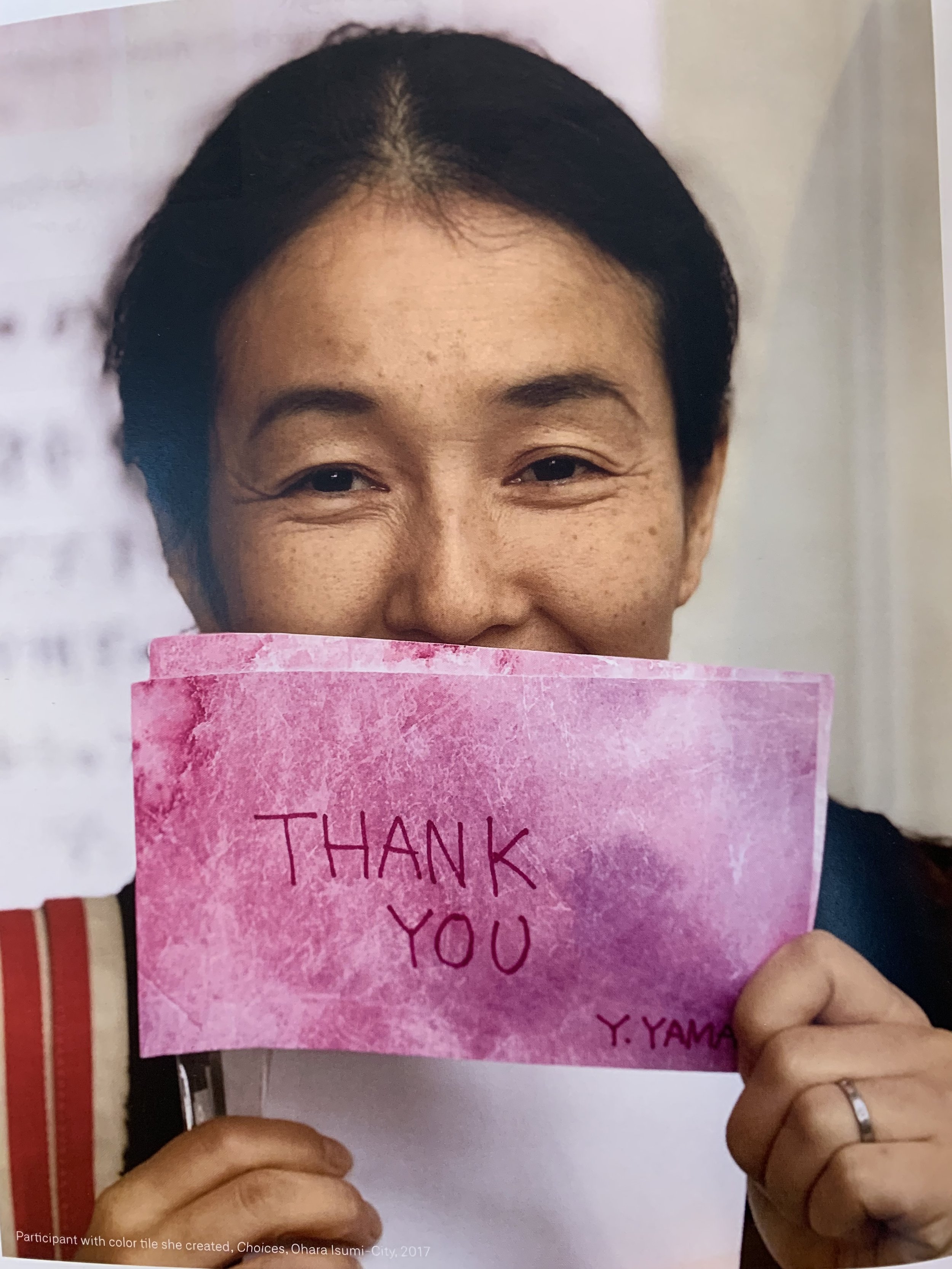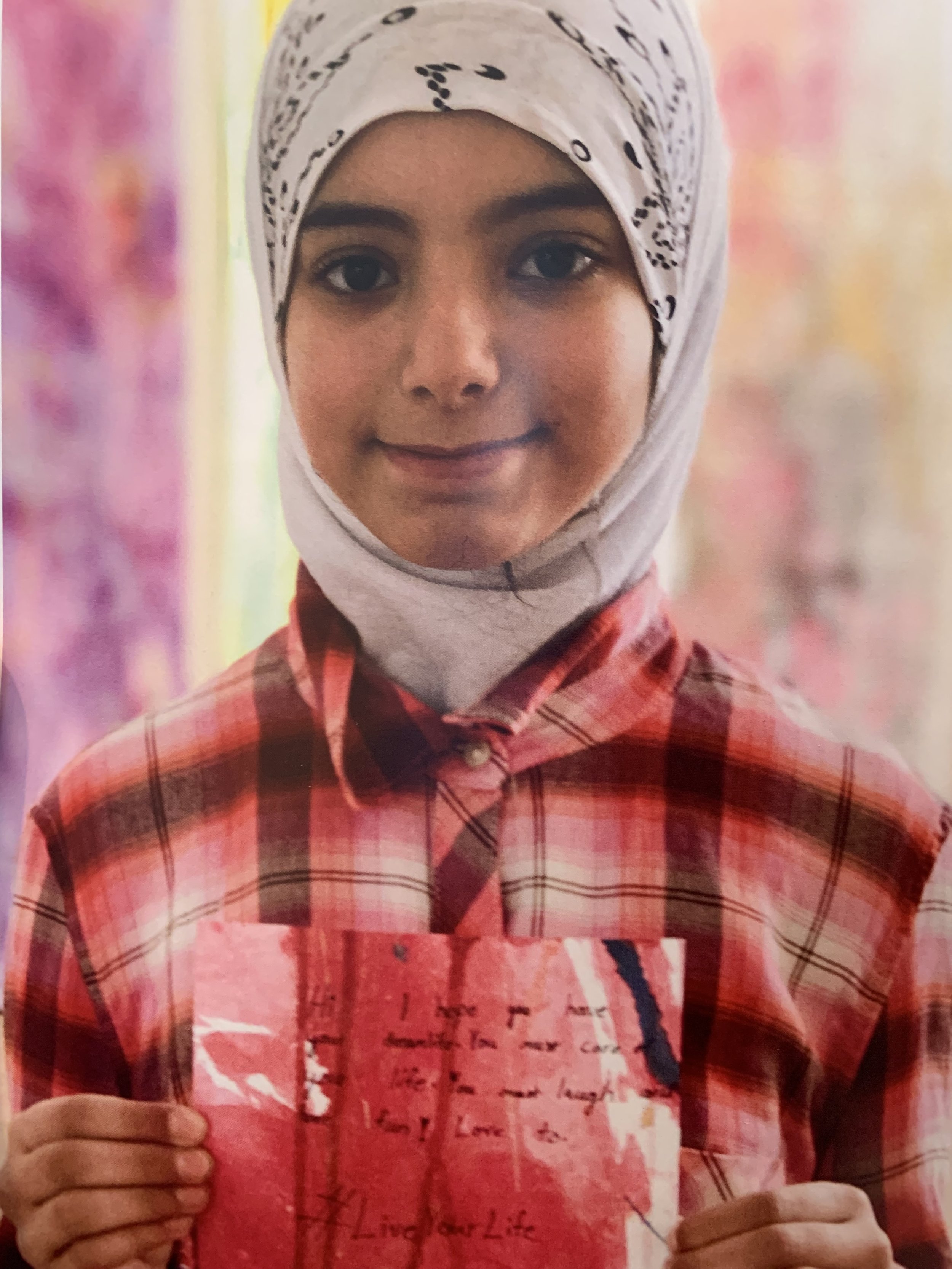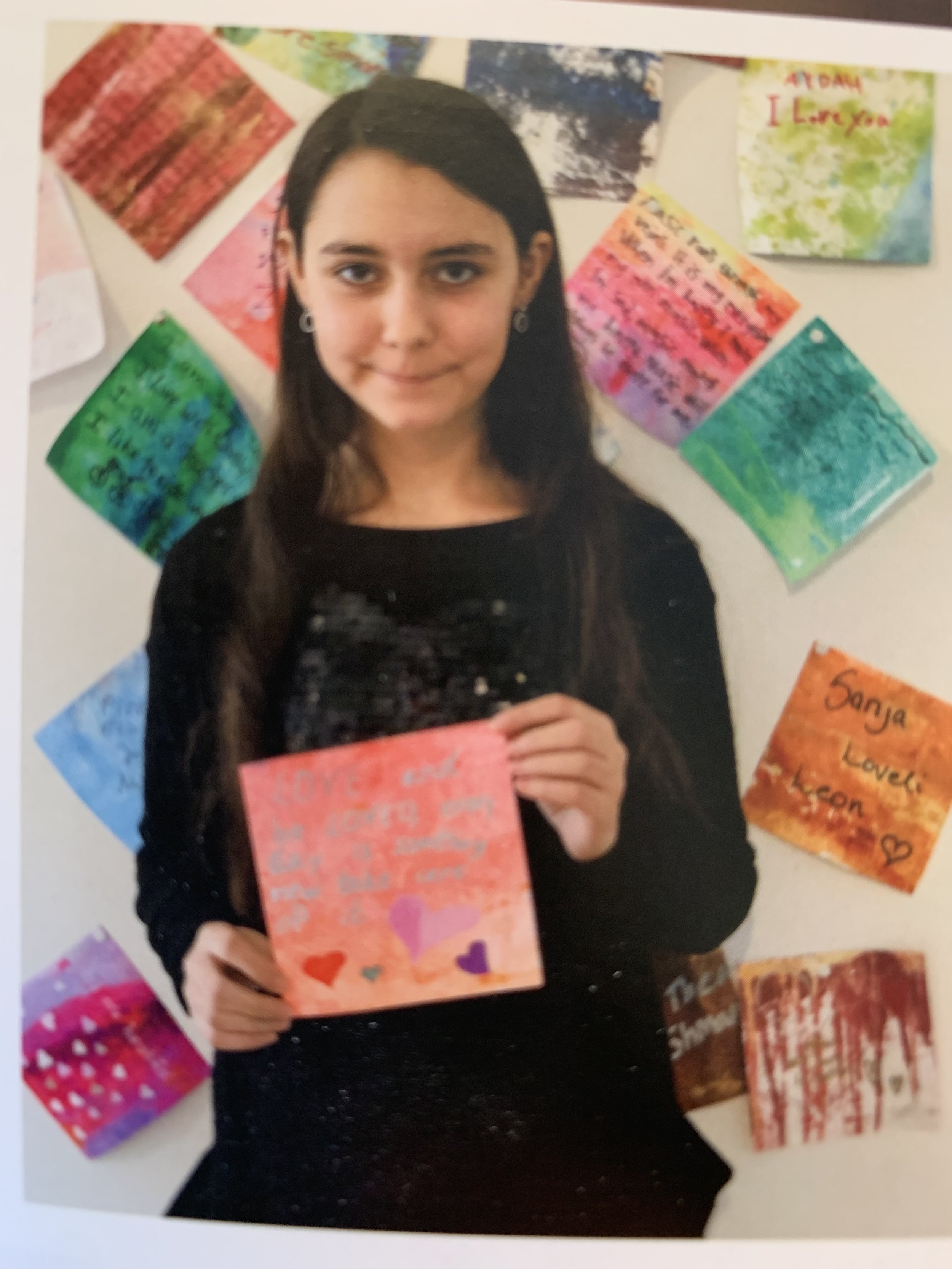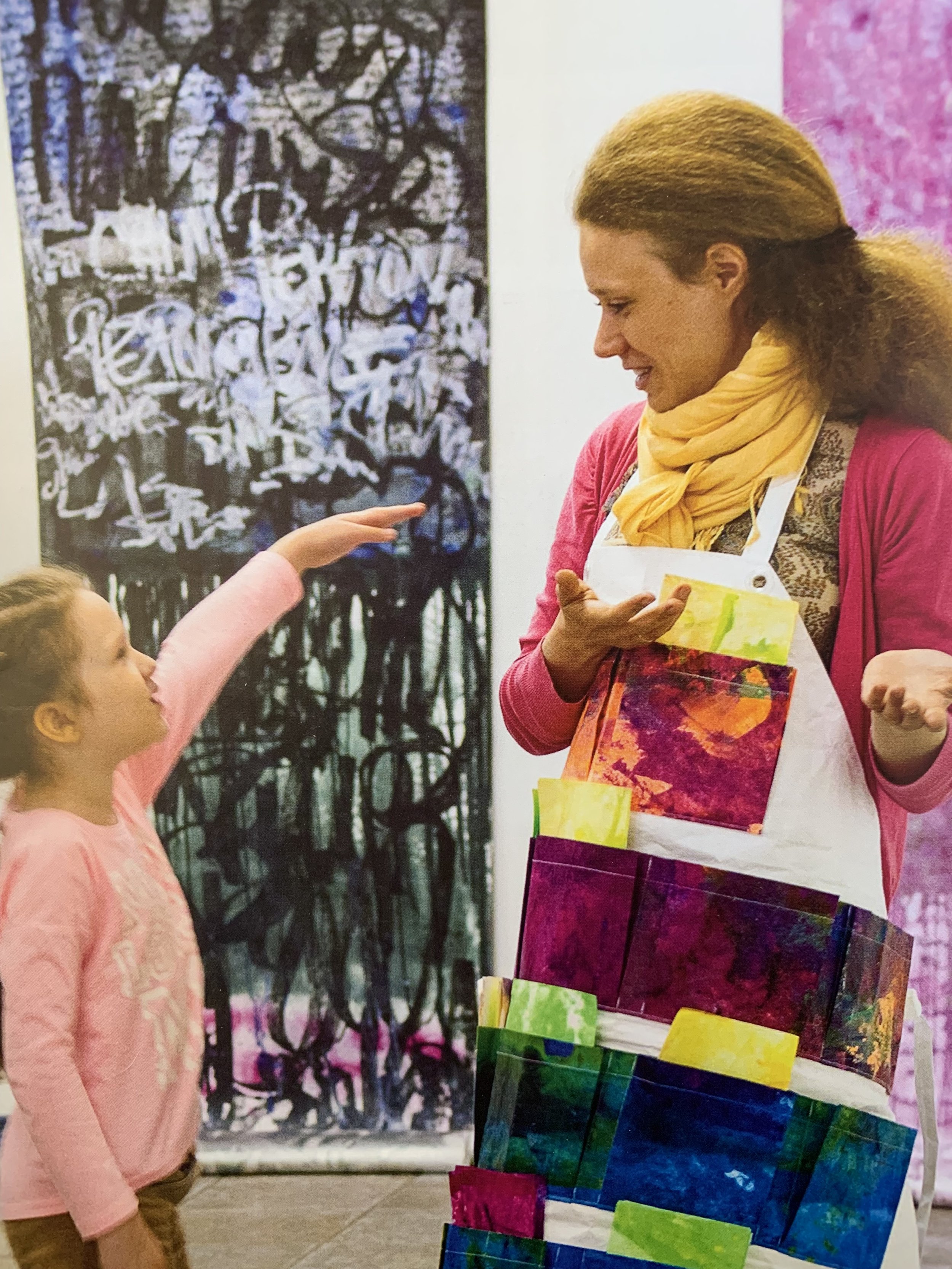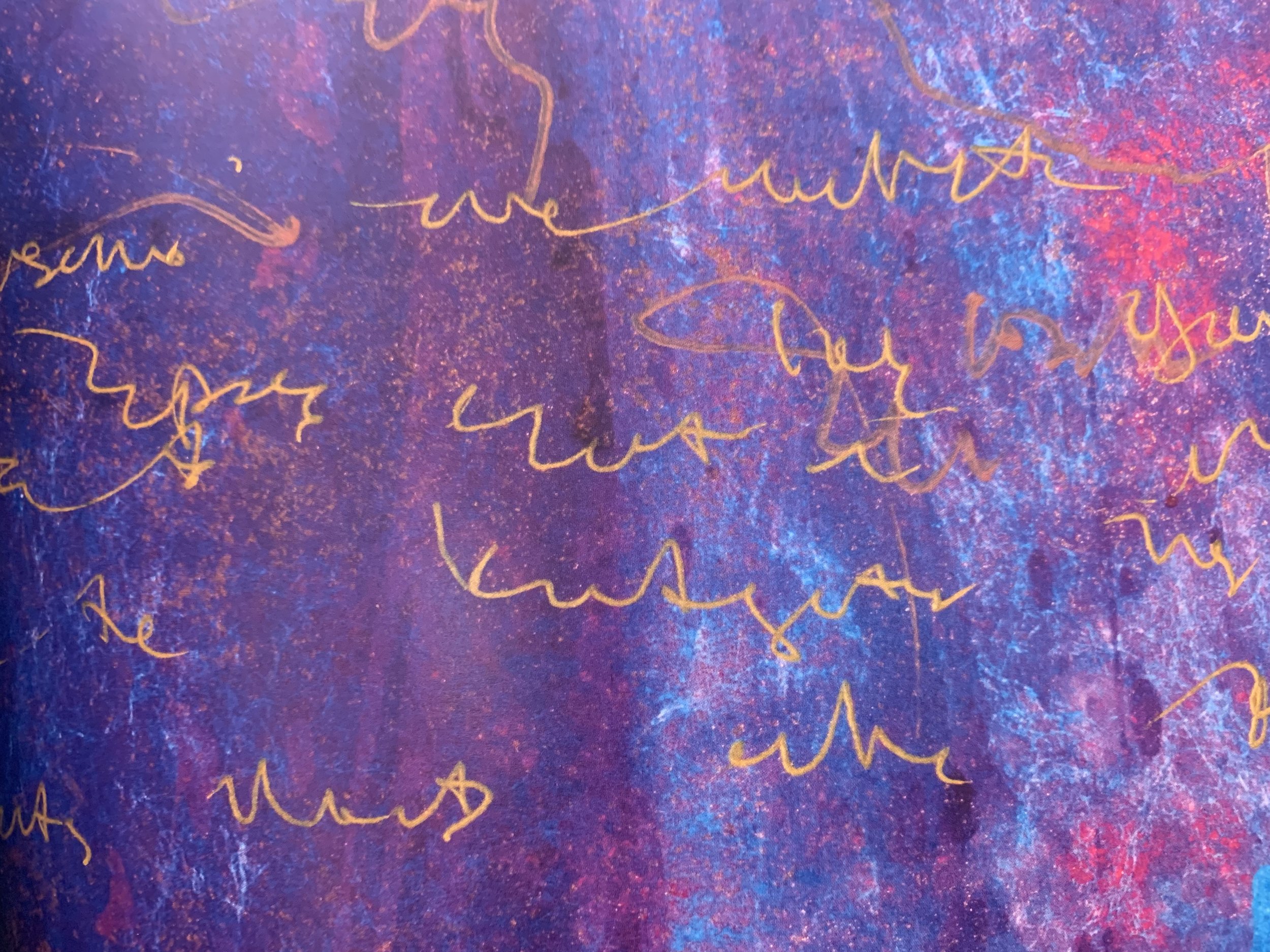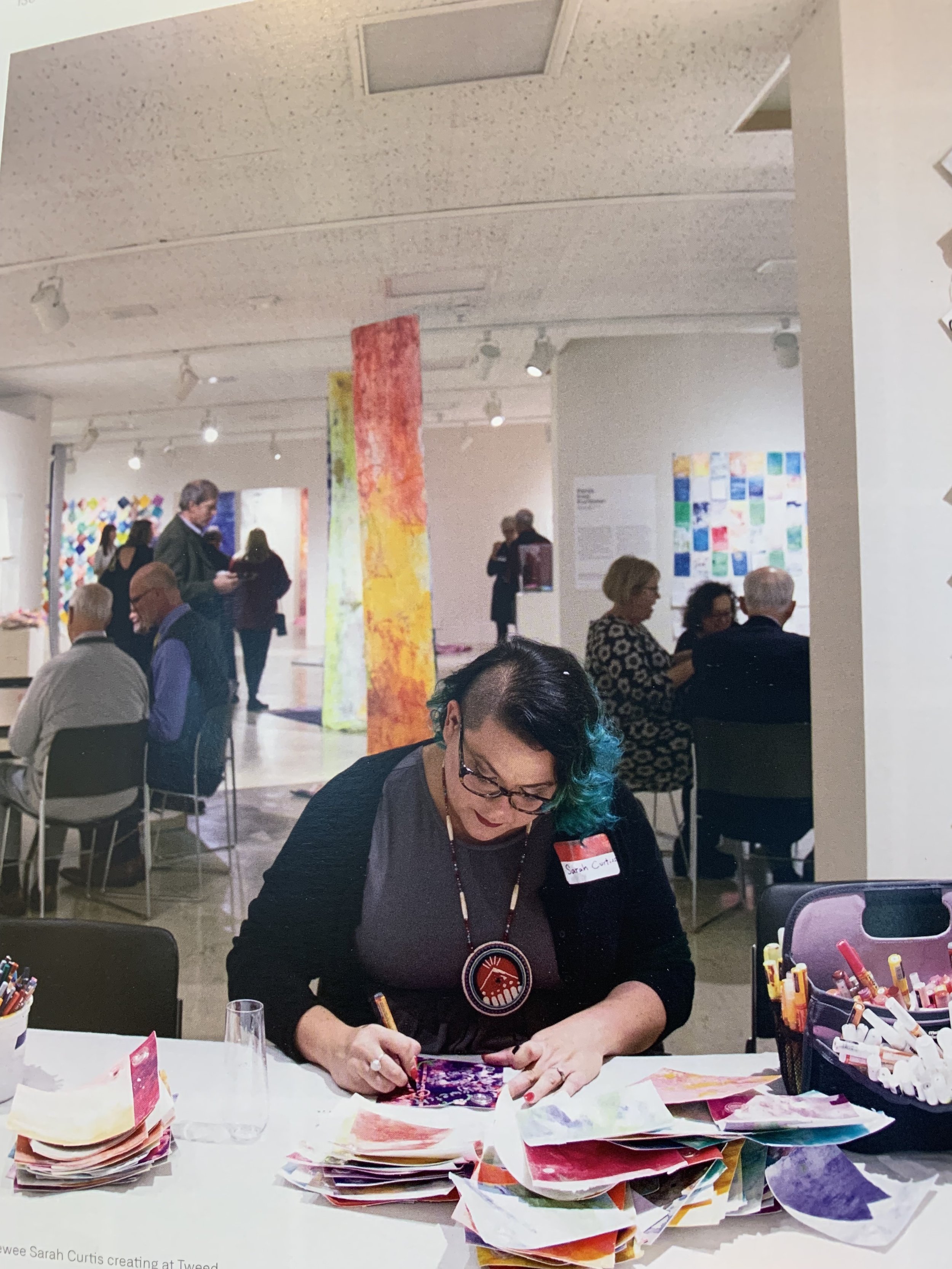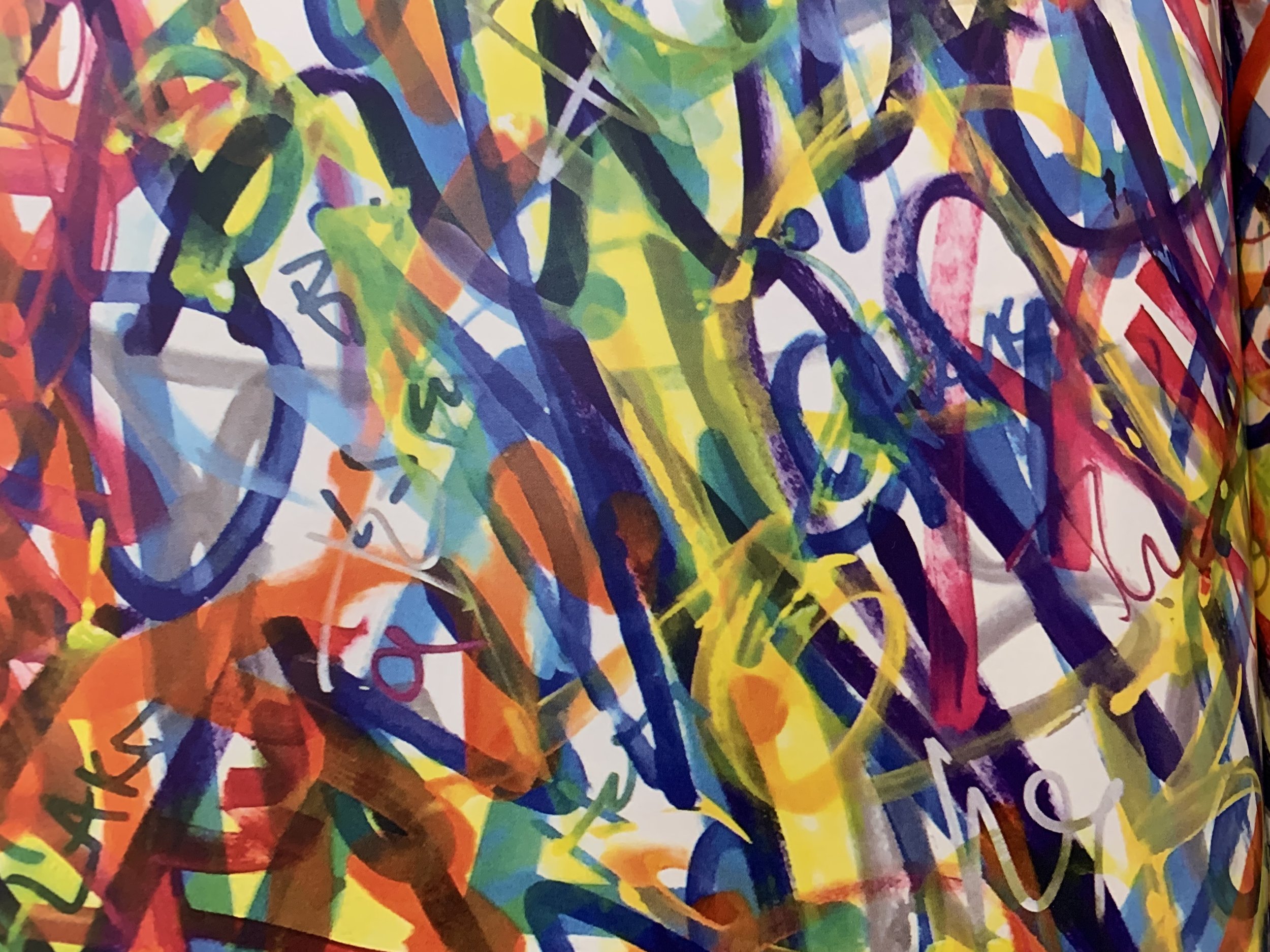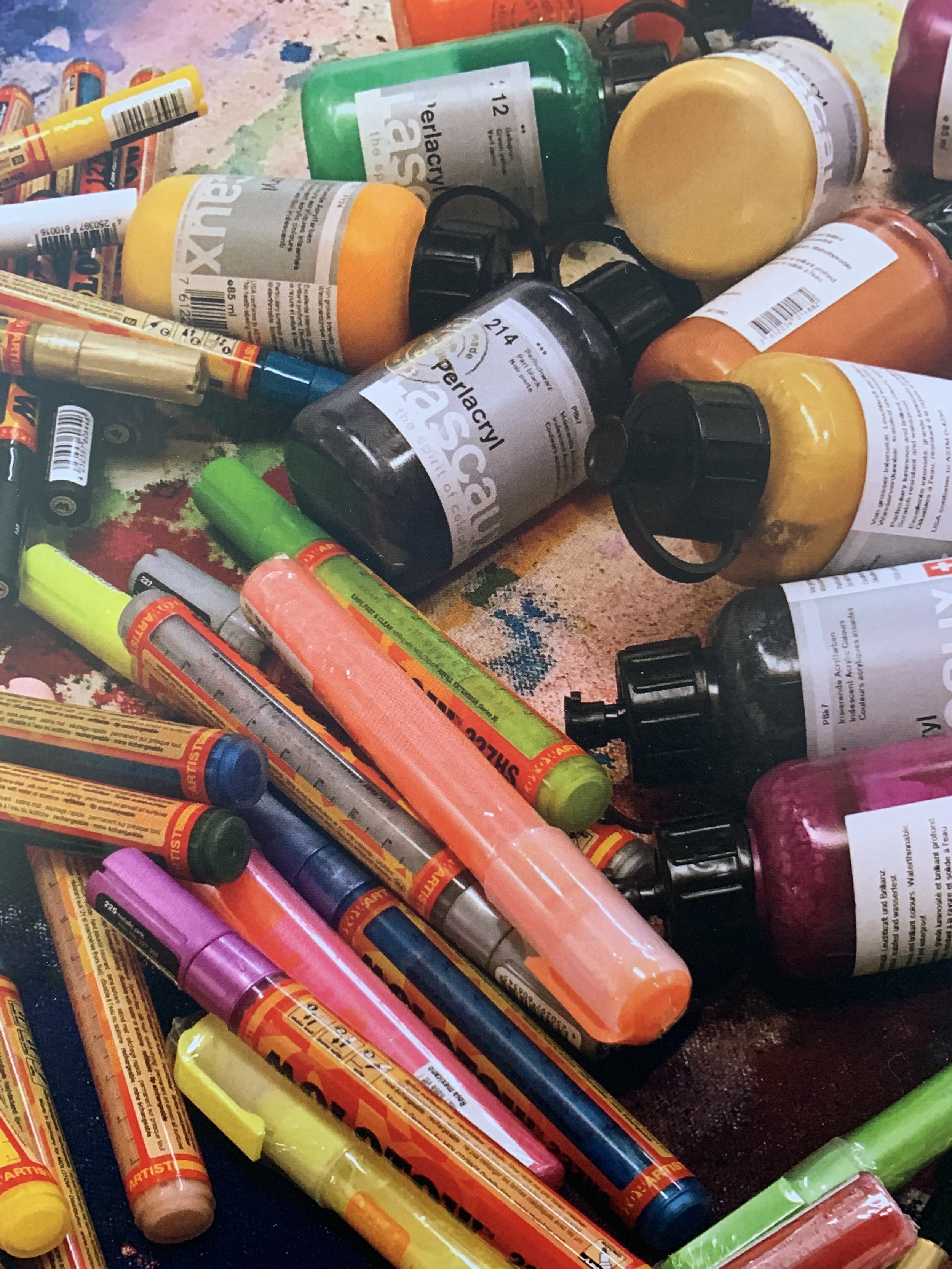Anne Labovitz - What Emerges
/St Paul artist, Anne Labovitz, is an effusive welcome wagon of one.
One of her most visible, and gregarious, public art pieces is on display at MSP’s Terminal 2, hailing and bidding farewell to thousands of travelers and hometown folk coming and going each day. The 40-some scrolls that unfurl from the Terminal’s ceiling are richly colored; textured and speckled; with drips, and looping, cursive lines, and sparkles. Each scroll is an abstraction of what exactly? A cityscape seen through snowfall? A neighborhood sunrise and the gloaming? A forest, a fish, a sandstorm? The colors of one’s heart? The feeling of sadness? Of gratitude? A decorated night sky?
MSP Terminal 2 Exhibition of “122 Conversations: Person to Person, Art Without Borders".” Photo by David Sherman
What observers might not immediately know about Anne’s playful and billowing piece is that each scroll is a letter of sorts - from students and civil servants, clerks and museum curators, grandfathers and at-risk youth, freedom fighters and art teachers - authored in a home place and submitted to others far-away. Anne titled it “122 Conversations: Person to Person, Art Beyond Borders”; and while the artist’s imagination gave the beautiful and beckoning art its shape, community gave it color, texture, permeability, and life.
The scrolls materialized out of the diplomacy of Duluth’s “Sister City” relationships. From Duluth (Anne’s hometown), the artist sought conversations with, and between, citizens in Thunder Bay, Canada; Rania, Iraqi Kurdistan; Vaxjo, Sweden; Petrozavodsk, Russia; Ohara Isumi-City, Japan; and Duluth, Minnesota. The scrolls originated and ended in Duluth’s Tweed Museum and traveled by suitcase - a sort of “portable peace train” - to each of Duluth’s 5 Sister Cities. At each stop, Anne’s painted scrolls were displayed in salutation from one city to another: “Inspired by Petrozavodsk for Canada (2015),” for example; “Inspired by Ohara Isumi-City for Sweden (2017)”; or “Inspired by Thunder Bay for Iraqi Kurdistan (2018).” In each city, viewers were invited to experience the richly saturated, interpretive scrolls, and contribute – on small squares similar to the large banners - their own greetings to global partners. Throughout the project, layers of language and story accrued; each individual made their mark, deepening the art-inspired conversation.
“Inspired by Thunder Bay for Duluth, 2018, “ Acrylic on Tyvek, Anne Labovitz
The project, which took Anne 6 years to plan, produce, edit and curate, began with Skype interviews she conducted with citizens from each Sister City. “60 interviews, 30 minutes each. Without exception,” Anne swoons, “I fell in love.” As Anne connected with locals, she was able to put a face to the place, set context, and draw authentic material from which to create. She was surprised how easily the conversations flowed, despite language and time differences: “I was leaning in,” the artist offers, “they were leaning in.” Anne delivered a standard set of questions: she asked each interviewee their name, age, and profession; to describe themselves; to name their favorite color; to tell her what they hoped for. Despite the generic inquiry, an immediacy of familiarity and trust emerged. Her subjects’ answers were often deeply personal: “I think I should tell you,” one subject offered to Anne, “my son died.” Another revealed, “I have breast cancer.” Those confessions drew them close, human to human. “We were discovering the us-ness in us,” Anne declares. “That intimacy was sacred.”
Anne had an epiphany during those interviews: conversation was the core of her artistic practice. It was not a new understanding, but she would apply it in a more holistic and intentional way in “122 Conversations.” Anne had been influenced early in her life by her artist grandmother who taught her Martin’s Buber’s “I / Thou” philosophy which acknowledges the power of “I” in relation with another, without separation or distraction, through dialog, where individuals can come to know an indivisible “oneness.” “When two people see each other,” Anne says describing Buber’s thinking, “Everything else falls away.” Surrounded by her many subjects, Anne recognized human communication as a driving artistic force: “I knew those moments could be made visual. They could be shared in a visual form, without compromising the integrity of what people said.”
Screenshot of Skype interview between Anne and Rania, Iraqi Kurdistan mayor with grandson
Anne’s lusciously painted scrolls arose from those conversations, and her presentation pivoted and changed as it went out into the world and came back to her studio for editing and additions, as she readied new scrolls for the next city down the line. “Public art has to be nimble,” Anne says, “to fit the parameters of the community. Fortunately,” she adds, “I’m a problem solver. That’s what artists do.” Each site would require differently dimensioned scrolls; instructions for accompanying art projects needed to be translated into the host city’s language; the scrolls (and art making materials) would need to be packed and light enough to be carried by Anne or an emissary to the Sister City for installation. “In Iraqi Kurdistan, there is no Fed Ex, no DHL. The whole exhibit needed to be under 45 pounds and fit in a suitcase, with enough space for markers, squares [for participants to write/draw on], aprons, gifts,” Anne says.
At each stop, citizens were invited to interact and co-create with Anne and the exhibition. Anne traveled to 4 of the 6 Sister City cites and guided participants in conversation and art making. Students and exhibit visitors added Japanese or Swedish – whatever their native language - to colored squares (called “Choices Tiles” by Anne) as words of advice or solace, introduction or secret-sharing with their “Sister City” pals. Anne then incorporated those messages into the next set of scrolls created for the next city. A vocabulary emerged of shared human experience: “Issues like loneliness, disconnection, community building and wellness, hope” came through the messages, Anne notes. And the cumulative effect of participation and sharing? “I heard from viewers,” Anne says. “They told me, ‘I feel seen’; ‘I feel heard’; ‘I feel important’.”
Visitors to Terminal 2 at MSP might not discern the distinct letters or messages written in cursive high above as they hurry to leave town or return home. But human discourse is woven into the art and is integral to the human story it depicts, even if Anne doesn’t mean for the scrolls to be “read” in the traditional sense. As a piece of art, a single scroll’s buoyant “whoosh of color” is beautiful and pleasing enough on its own. As an act of kindness, the cheerful reach and the creative generosity of “122 Conversations” enunciates in a full voice: Anne Labovitz welcomes you to this place. And so do we all.
MSP Art, Photo by Steve Cohen
Resources:
“122 Conversations: Person to Person, Art Beyond Borders”: https://122conversations.com/
Vimeo: Anne Labovitz, “122 Conversations”: https://vimeo.com/316133584
Anne Labovitz: https://labovitz.com/
Photographs by: Tracy Nordstrom, Anne Labovitz, and David Sherman in “122 Conversations: Person to Person, Art Beyond Borders” Exhibition book, Tweed Museum of Art, Duluth, MN (unless otherwise noted)



